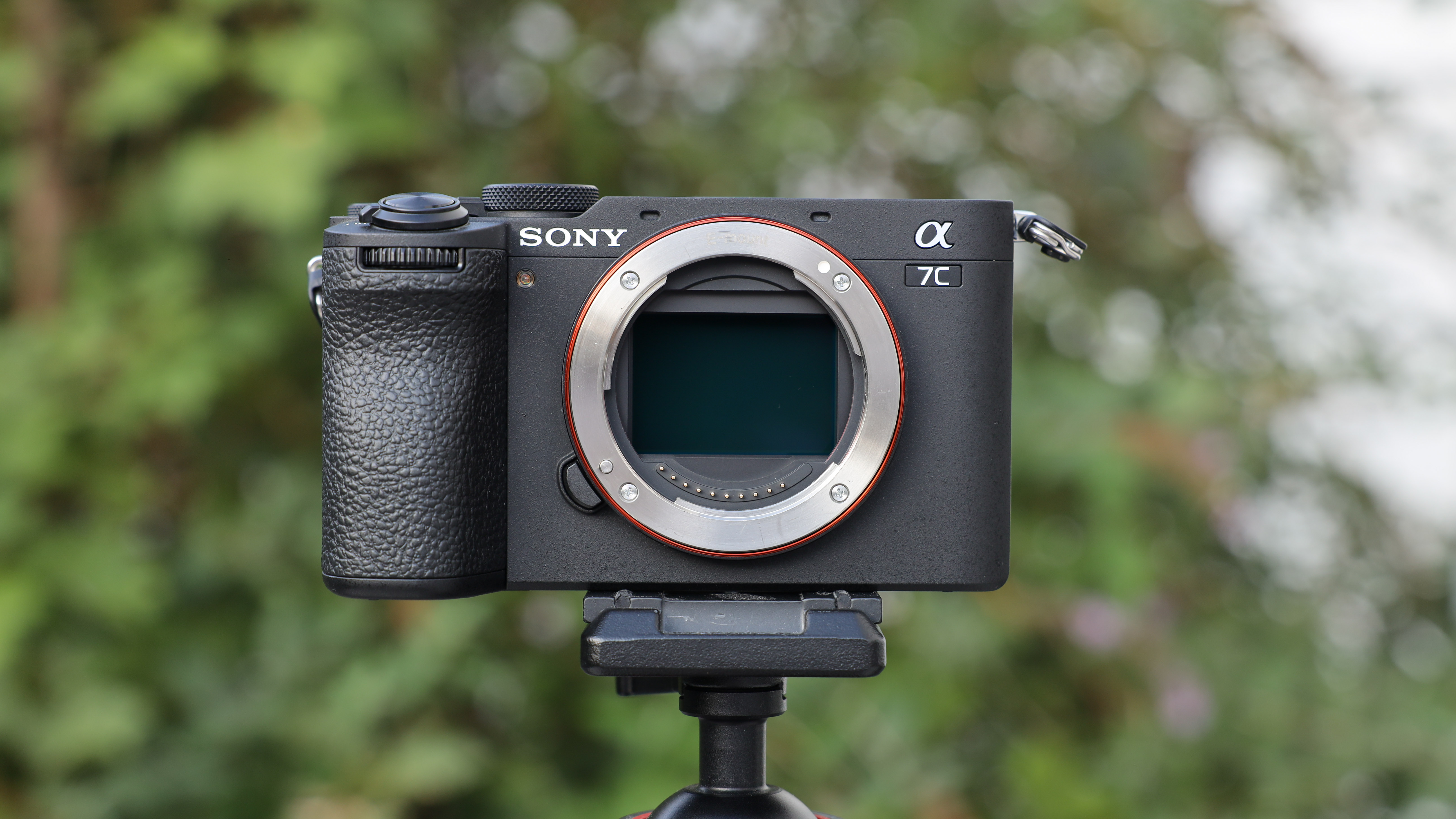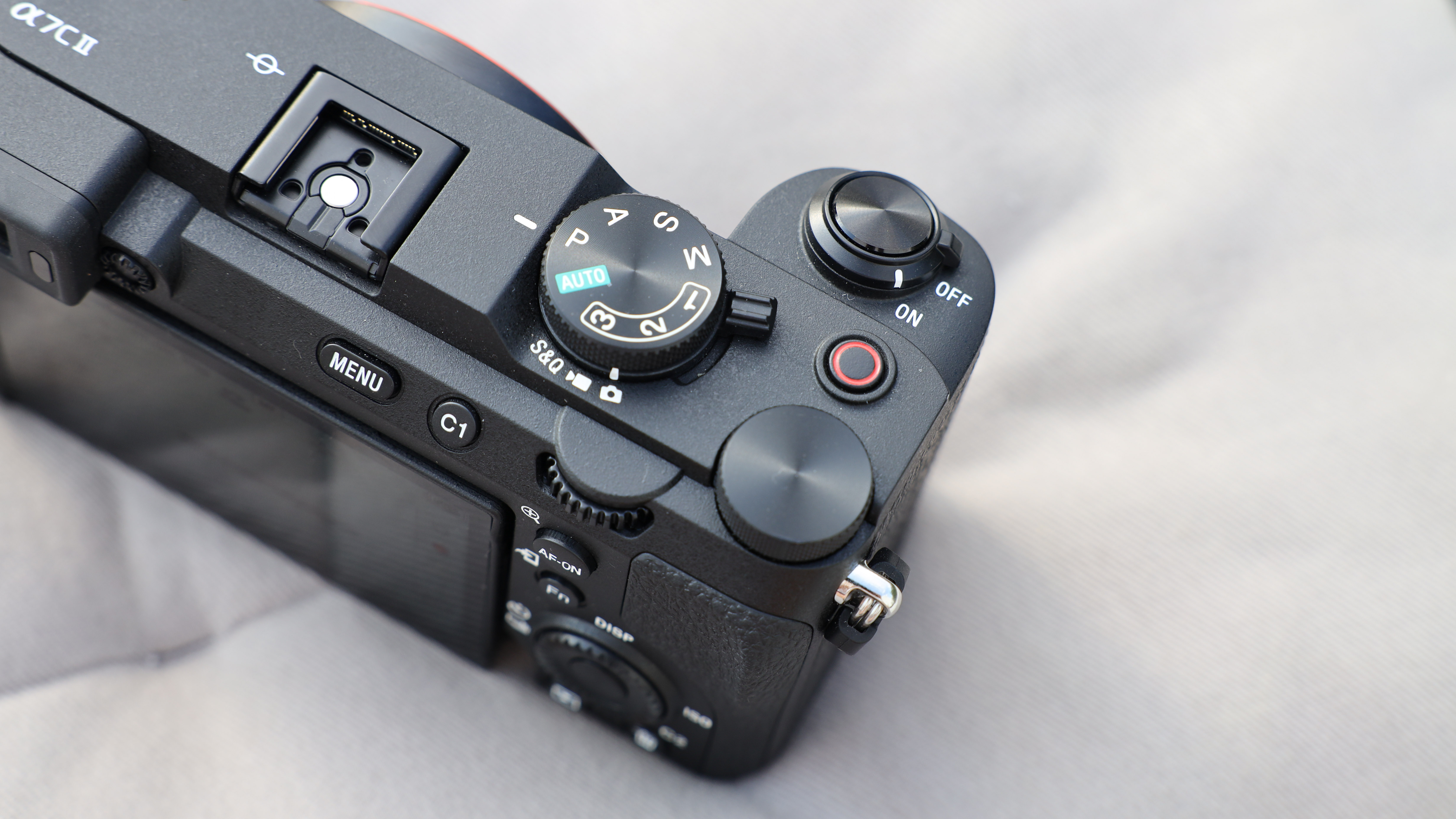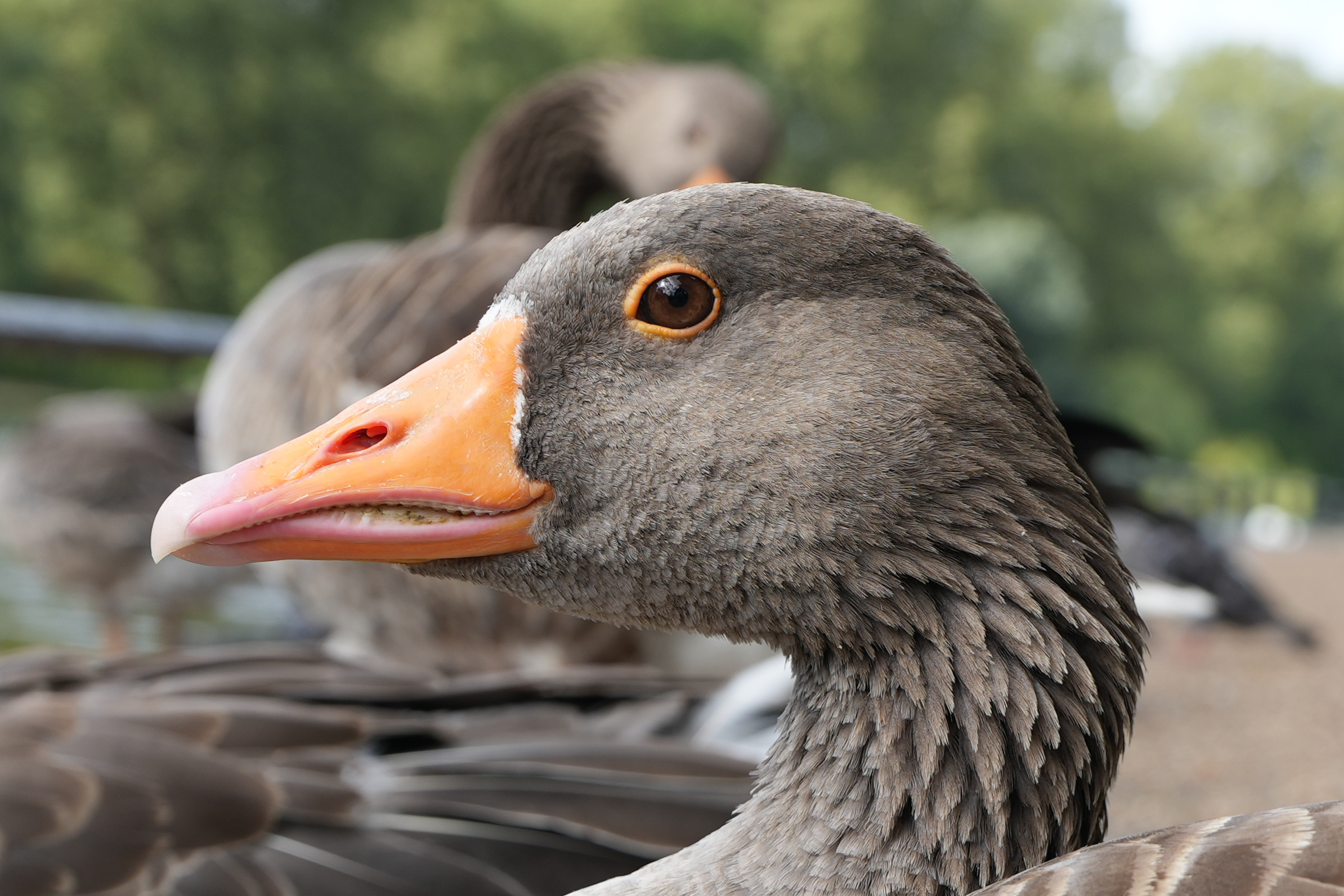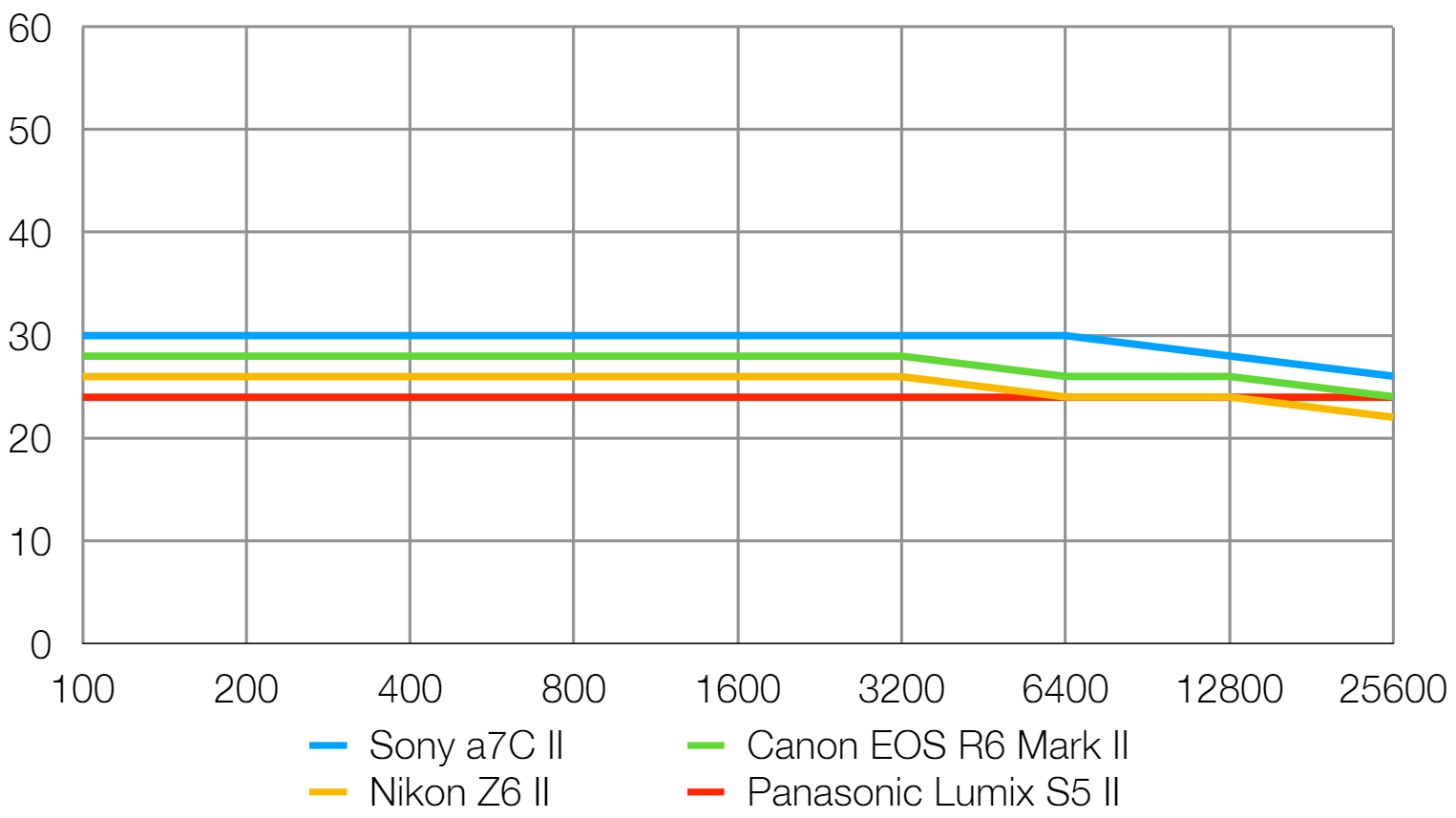Digital Camera World Verdict
The Sony A7C II is a sum of parts we have already seen in other Sony cameras, and while it is an incremental upgrade over the original version, it packs in some very welcome big improvements to autofocus and a bump in resolution to 33MP. The camera still is one of the best options for content creators looking for the smallest and most compact camera, while still getting pro-level features. As with Sony’s other recent cameras, Sony has offered up the very best of its video capabilities, but the A7C II is also the body for hybrid creators who care just as much about stills photography, with its rangefinder-style EVF. Despite some improvement in the camera ergonomics, it is still a difficult camera to handhold with larger Sony lenses, which the inclusion of a full frame sensor suggests it is designed for.
Pros
- +
Improved 33MP full frame sensor
- +
Excellent autofocus
- +
Compact size
Cons
- -
Ergonomics still not great with larger lenses
- -
Only one SD card slot
Why you can trust Digital Camera World
Opening the box containing the new Sony A7C II was a real déjà vu moment, only a few weeks have passed since I was unwrapping the brand new Sony a6700 camera, and as I pulled the A7C II out of its case, it was an oddly familiar feeling. The Sony A7C II might well be a very similar design to that camera, except this time with a full frame sensor inside.
The A7C was released two years ago as a compact form the of Sony A7 III, which was the closest camera at the time and was meant to be Sony’s new champion for content creators that wanted the most compact camera possible that was easy to travel with and fit into cages and rigs, while also offering full frame professional quality.
Since then Sony has gone hard into its ZV range of cameras that aim to court the more video-centric of content creators. For some time, those who cared just as much about stills were a little left out in the cold. Although in quick succession Sony has answered these calls with updates to not only its top APS-C camera with the new Sony a6700, but now with the A7C II for full frame enthusiasts.
Trying not to get this camera confused with the rest of Sony’s lineup might be tricky. Sony seems on a mission to fill up every conceivable version of a camera possible. But the A7C II is now the most advanced compact “photography” full frame camera in Sony’s lineup, although there is also the Sony ZV-E1 to confuse video makers.
The A7C II has seen some very welcome bumps in specs to the prior version, although these come at a significant cost with the A7C II costing significantly more at launch than the A7C for the body alone, and the Sony A7C can be picked up for a lot less than that today. So what exactly are you getting for all this extra money and is it worth it?
Sony A7C II: Specifications
Sony model number: ILCE-7CM2
Sensor: 33MP full frame Exmor R CMOS BSI
Image processor: BIONZ X and AI Co-Processor
AF points: 759-point phase AF
ISO range: 100-51,200 (exp. 50-102,400)
Metering modes: Multi-segment, Center-weighted, Spot, Avg., Highlight
Video: 4K60p (Super 35), 4K30p, FHD120p
Viewfinder: 2.36m dots, 0.7x mag OLED
Memory card: 1x SD/SDHC/SDXC/UHS-II
LCD: 3-inch vari-angle touchscreen, 1.03m dots
Max burst: 10fps with AE & AF, 1000+ JPEGS, 44 RAW
Connectivity: Wi-Fi, Bluetooth
Size: 124 x 71.1 x 63.4 mm
Weight: 514 grams (1 lb 2.2 oz)







Sony A7C II: Key Features
Powered by a 33MP BSI Exmor R sensor, coupled with the robust Bionz XR processor and AI chip, the A7C II accelerates image processing by up to 8 times when compared to its predecessor, the A7C. This translates to a swift 10fps continuous autofocus shooting rate, with a buffer capacity to store over 1000 JPEGs or 44 RAW files. Its ISO range also encompasses 100 to 51,200, expandable up to 102,400.
The best camera deals, reviews, product advice, and unmissable photography news, direct to your inbox!
Oriented towards content creators, the A7C II beefs up its video performance, capturing 4k60p footage and offering 4k30p with oversampling, and FHD video at 120p. Advanced options include 10-Bit 4:2:2, S-Cinetone, S-Log, and a robust 7-stop in-body stabilization system. Additional features cater to a diverse range of creative needs, encompassing Auto Framing, in-camera LUTs, soft skin rendering, focus breathing correction, and four-channel audio recording.
The redesign of the body prioritizes some ergonomic enhancements, featuring a new front dial and an extra custom button, very reminiscent of the design introduced with the APS-C Sony a6700. The electronic viewfinder retains its 2.36 million OLED dots but with an increased 0.7x magnification while refining low-light focusing capabilities to -4.0EV.
The 3.0-inch 1.03 million dot touchscreen incorporates a revamped interface, offering Sony’s new and improved touch experience. The A7C II continues to feature a single SD UHS-II slot, positioned beside HDMI, headphone, microphone, and USB-C ports.
Sony A7C II: Build & Handling
The A7C II doesn’t venture into any unfamiliar water when it comes to design, the camera very closely follows the design from the previous model as well as the small improvements Sony made for the a6700. The camera looks good, in all black anyway, I am still not sold on the black and silver version which still feels like a slightly desperate attempt to appeal to “retro” fans, although the camera is betrayed by its otherwise very modern looks. The appearance is a little boxy and uninspiring, I don’t get any joy when I see or hold the A7C II, it looks practical but not desirable.
There are some small ergonomic improvements from the prior model, with Sony adding a dial to the front of the grip of the camera, a new custom function button up top, and a small reworking of the dials on the top of the camera for switching between photo, video and S&Q modes. The front dial is very useful, as that is my preferred location for changing settings, the other changes are neat, but won’t fundamentally change how you use the camera. Still, due to the compactness of the camera, I found it wasn’t as fluid to move the dials while still gripping onto the camera as an SLR-style body with a deeper grip.
All the dials have a nice click to them, with good resistance, it's not easy to accidentally change settings by brushing past the dials. The A7C II maintains the vari-angle touch screen from the first model, although this time offers Sony’s new and improved interface, which does make navigating basic settings so much faster and easier than before. Sony still is not my favorite camera interface, but it is great to see them striving to improve.
Otherwise, the camera feels much the same as the previous version. The A7C II is easy to hold and use with smaller lenses, although if you pair it with larger G Master lenses as its full frame sensor suggests that you should, the camera quickly becomes unwieldy and hard to use handheld, and can just look silly. It again raises the question of who this camera is actually intended for. I was testing this camera alongside the just-announced Sony FE 16-35mm f/2.8 GM II lens which on the A7C II was both awkward to use on the camera, and made me feel a little awkward while using it on the streets (otherwise an exceptional lens).
Sony A7C II: Photo
Image performance is excellent, Sony keeps touting the work it has done on improvements to natural colors, especially skin tones, and it definitely shows. Images are some of the most true to life, with each manufacturer having a slight different twist on its color science, and I like the colors from the Sony A7C II. Absolute accuracy is not always top of my list, I like the imperfect character of other systems as well, but if you value accuracy then Sony cameras are a safe bet.
I had a couple of little niggling issues when shooting though. A few times, the white balance on the camera was quite inconsistent when shooting multiple photos of the same subject with exactly the same settings. This wasn't enough to be truly troubling, but I did have to edit the balance on a few final images.
The dynamic range on the camera is also excellent in RAWs, I found I could pull back the highlights to reveal so much more detail, however, in the JPEGs, Sony seems to allow the highlights to blow out a little too much. In some photos where the sky was especially bright, in the JPEG, the clouds were glowing, but in the RAW image, I could easily recover the details in the sky.
As we have come to expect from Sony, autofocus is exceptional, and the Bionz XR and AI chip continue to do Sony proud. The camera has all of Sony’s latest autofocus algorithms for subject recognition and tracking, including human bodies, heads, and eyes as well as animals and vehicles, which all just work so well. When stalking birds around the park, the A7C II managed to nail focus on the bird's eyes perfectly even when it moved its head rapidly or turned away and back again, focus was immediately locked back on.
For images, the in-body stabilization works great and allowed me to shoot a few stops lower than I would have chanced without it and still get usable images. A lot of Sony’s own lenses don’t come with optical stabilization, which means that other systems that do can still get a few more stops lower in shutter speed, although using third-party lenses might help here if you are a keen low-light shooter.
Sony A7C II: Sample Images











Sony A7C II: Video
Sony has not changed its formula when it comes to video for the A7C II from any of its most recent cameras. This is not a bad thing as Sony’s video is among the absolute best you can get on a camera today for this price. Video in 4K is excellent quality straight out of the camera, with rich color and fantastic dynamic range that pulls in all the details from the highs and lows without any additional post-production work.
If you do want to get in-depth with editing your videos, then the A7C II has S-Log, and S-Cinetone or can use in-camera LUTs, all of which will give you varying levels of control over your final footage. There are no RAW codecs supported on this camera either internally or externally via a recorder, while Sony’s options are great, if you are shooting with different camera brands then this can be harder to get different footage to match. The Sony A7C II also has four-channel audio recording for more professional levels of port-production audio editing, although unfortunately, I do not have the audio equipment to properly test this out.
Image stabilization is solid, the in-body image stabilization alone can account for a certain level of ‘jitters’, although it does struggle when it comes to more dynamic movement, which is fairly standard for IBIS. However, the active image stabilization does help to counter shake on some more rigorous movements, although this is at a slight crop. You can also use post-production to digitally stabilize your image, but I personally preferred doing it in camera so I could see the framing of my shots and make any adjustments on the spot.
Sony A7C II: Lab results
For our lab data comparison we chose three rival full-frame cameras that cost similar money to the a7C II: the Canon EOS R6 Mark II, Nikon Z 6II, and the Panasonic Lumix S5 II.
We test resolution using Imatest charts and software, and dynamic range and signal to noise ratio with DxO Analyzer.
Resolution:
The a7C II's 33MP sensor is the most pixel-packed of the bunch, so it makes sense that the Sony comes out on top in our resolution test. It resolves marginally more fine detail than the other three 24MP cameras.
Dynamic range:
The a7C II captures good dynamic range, almost equalling the Nikon and Panasonic cameras on test throughout our tested sensitivity range.
Signal to noise ratio:
This test compares the amount of random noise generated by the camera at different ISO settings as a proportion of the actual image information (the 'signal'). Higher values are better and we expect to see the signal to ratio fall as the ISO is increased.
Here we see the Sony's extra megapixels count against it, slightly. The a7C II has to cram 33 megapixels onto the same sensor area as the other cameras fit 24 megapixels, so each of the Sony's pixels has to be smaller, and therefore less light-sensitive. This in turn leaves them susceptible to generating more image noise. However it's still impressive that the Sony is only barely beaten by the Canon and Panasonic cameras.
Sony A7C II: Verdict
The Sony A7C II basically takes parts from other Sony cameras we've seen before. It's a bit of a step up from the original version, with some really nice improvements in autofocus and a bump in resolution to 33MP. If you're a content creator who wants a small and compact camera but still packed with pro features, this one's still one of your best bets. Like other new Sony cameras, it's got top-notch video skills, but the A7C II is also the choice for folks who are into both photos and video, thanks to its rangefinder-style EVF and photo-centric features.
However, even though Sony has tweaked the camera's body in an attempt to improve its ergonomics, it's still a bit tricky to handle with those bigger Sony lenses from Sony’s G Master range, which is unfortunate as it's got that full-frame sensor built-in, it suggests that this would be a perfect pairing.
You might also like...
The Canon EOS R8 can’t quite keep up with the Sony A7C II as it falls behind on a few key features like IBIS and battery life. However, it is much cheaper than the A7C II, still has an incredible full frame sensor, great video, and Canon’s outstanding collection of lenses including compatibility with all Canon’s legacy glass using an adapter.
The Panasonic S5 II is perhaps one of the most underrated cameras out there, but it offers much of the same formula that makes the A7C II a desirable camera. Sure it is bigger and has a traditional SLR design, but it still packs in incredible photos, a brand-new focusing system, IBIS, and top of its class video. What’s more, it is comparatively very affordable.
Read more: find out more about our top picks for the best full frame cameras or the best travel camera in our guides.

Gareth is a photographer based in London, working as a freelance photographer and videographer for the past several years, having the privilege to shoot for some household names. With work focusing on fashion, portrait and lifestyle content creation, he has developed a range of skills covering everything from editorial shoots to social media videos. Outside of work, he has a personal passion for travel and nature photography, with a devotion to sustainability and environmental causes.













